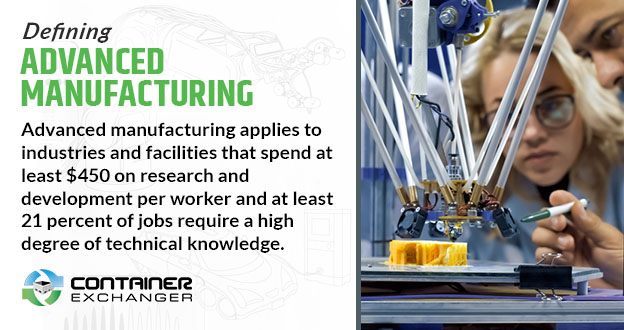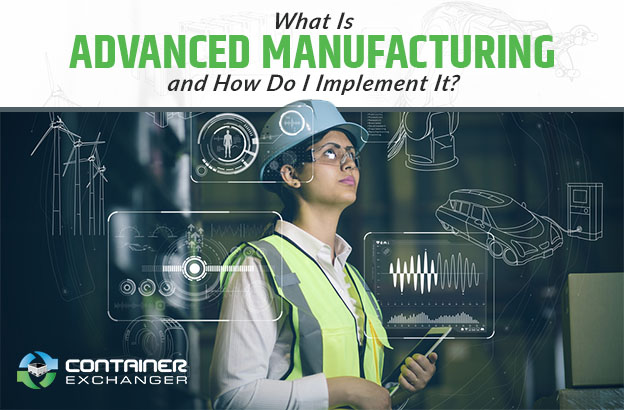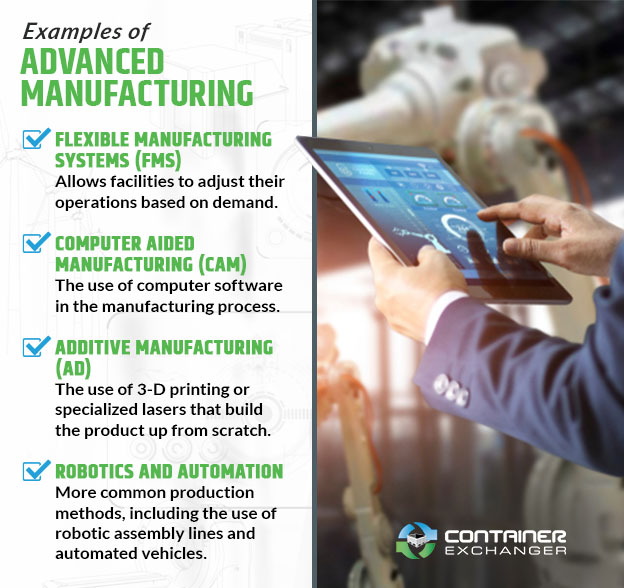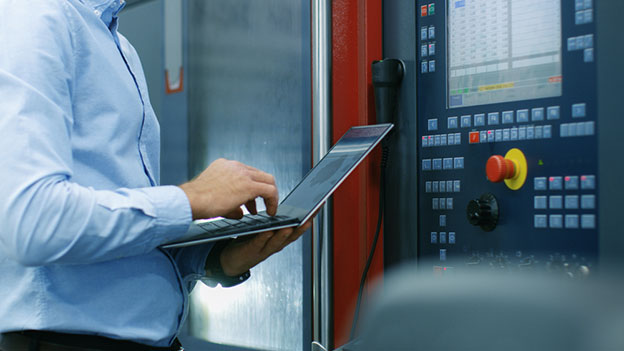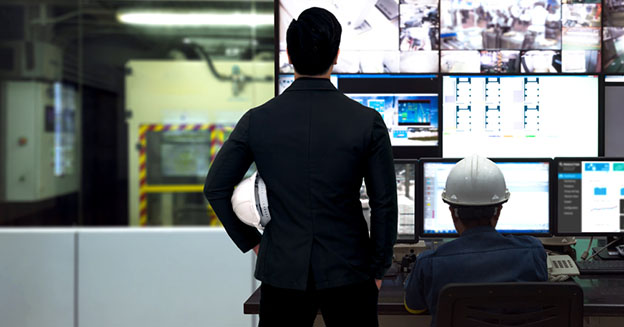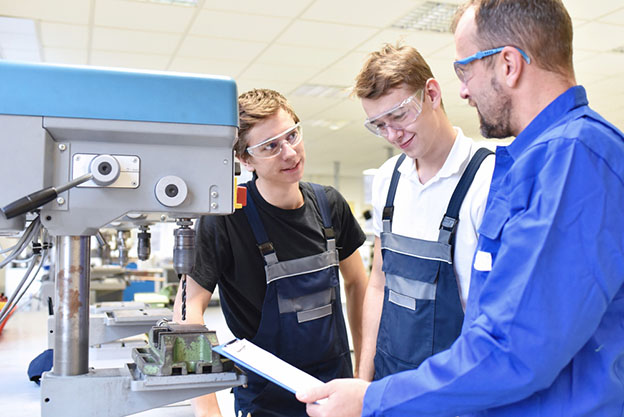The practice known as advanced manufacturing remains instrumental to the American economy. From pharmaceuticals to electronic and motor vehicles, these highly specialized products tend to be much more valuable than other types of manufactured goods. In 2016, they made up 60 percent of the dollar value of all U.S. exports.
To produce these products, facilities must rely on complex pieces of machinery and production methods, while adhering to strict safety regulations. For example, constructing the internal operating system for a car is often much more expensive and complicated than manufacturing Styrofoam cups. Companies like Apple, Intel and General Motors continue to lead the pack when it comes to research and development, giving their products an edge in their respective industries.
Buying Cheap Wire Baskets in Bulk Saves You Money!
If you are new to advanced manufacturing, you can learn from these companies as you begin refining your operations for the better. Regardless of what kinds of products your facility manufactures, there’s always room for improvement.
Defining Advanced Manufacturing
Think of the most sophisticated machines and products on the planet. From satellites to smartphones and everything in between, these items are the essence of advanced manufacturing. They are usually made up of dozens of interconnected parts and chips, each of which are vital to the overall functionality of the device. They must be constructed meticulously, following a series of rigorous instructions.
Consider the latest motor vehicle as an example. The average car is made up of tens of thousands of individual parts which means organizing and distributing materials from dozens of different suppliers. The company also has to produce the software for the vehicle, including a built-in GPS, as well as additional safety features, such as automatic lane departure sensors, low tire pressure warnings and even the “check engine” light.
However, there’s no clear definition for advanced manufacturing. The practice is common in the aerospace, automotive, electronics and healthcare industries, but the term is often open to interpretation. One could argue that all manufacturing requires some level of specialization and innovation. As traditional manufacturers embrace automation, the lines between the two are starting to blur.
Generally speaking, advanced manufacturing applies to industries and facilities that spend at least $450 on research and development per worker and at least 21 percent of jobs require a high degree of technical knowledge. Workers in advanced manufacturing also tend to make significantly more money per hour than those in traditional manufacturing facilities.
Advanced manufacturing also tends to be more productive. These facilities make up around 45 percent of the manufacturing workforce, while accounting for just 53 percent of all manufacturing output. Employees typically rely on automated machines when assembling products. They also need additional staff members for safety and quality assurance.
Order a Collapsible Bulk Container Today!
Examples of Advanced Manufacturing
The practice usually begins with advanced manufacturing technologies (AMTs). Here are a few examples:
Flexible Manufacturing Systems (FMS)
The FMS approach allows facilities to adjust their operations based on demand. The internal operating system will automatically halt or increase production according to the number of orders. This is key when building customized items for individual clients or customers. It also prevents the facility from producing more goods than it needs which helps maximize storage space. If each product costs several hundred dollars or more, the company will likely produce the exact number of items instead of trying to predict future demand. FMS often use robotic arms and individual workstations to assemble products according to the client’s specifications. Automated vehicles will often gather the exact number of materials needed to complete the order in question.
Computer Aided Manufacturing (CAM)
CAM refers to the use of computer software in the manufacturing process. Engineers will typically design the item in question virtually, using a specific number of materials, before automating the process throughout the rest of the facility. This allows the company to experiment with different manufacturing techniques and designs without wasting additional resources. This approach is common in the aerospace, automotive and transportation industries.
The global CAM market is expected to go from around USD 2,222 million in 2018 to approximately USD 3,626 million by 2025, one of the fastest growing sectors of the manufacturing industry.
Additive Manufacturing (AD)
AD refers to the use of 3-D printing or specialized lasers that build the product up from scratch as opposed to cutting parts out of a whole. This is key when it comes to reducing waste in the production process. The facility will typically build up layers of thermoplastics according to precise specifications. The machine will use just the right amount of material, preserving these supplies for future orders.
Companies can use this approach to produce spare parts and tools in-house instead of shutting down production until more parts arrive. Engineers can easily customize parts to improve the finished product. This allows for more innovation and design throughout the production process. The company may decide to replace a series of parts with a new component if it improves performance and functionality.
Robotics and Automation
Advanced manufacturing can also refer to more common production methods, including the use of robotic assembly lines and automated vehicles. Instead of having employees lift, move or retrieve containers by hand, many companies will use automated lift trucks, smart pickers and stockers and automated guided vehicles. These devices scan packages and materials as they move through the supply chain so the manager can remotely monitor inventory levels and operations.
This simplifies the production process by removing needless variables. A machine will never deviate from its path, so the manager can time the production process down to the exact minute.
Use this information when unlocking the potential of advanced manufacturing technologies.
How to Implement Advanced Manufacturing
Traditional and less advanced manufacturers can learn from this philosophy as well. Increasing output with less manpower is a common goal in the manufacturing industry. From paper cups to advanced electronics, you can apply these same ideas to your facility to increase efficiency and reduce costs. Use these tips to implement advanced manufacturing in your facility.
Start from the Top Down
Altering the production process can be a major investment, so these changes usually stem from the top. It’s best to get facility managers, C-suite executives, suppliers and retailers on board with these changes before pulling the trigger. Company buy-in and enthusiasm are key to the success when implementing new equipment or manufacturing techniques.
AMTs can cost hundreds of thousands of dollars to implement, depending on the equipment in question and the scale of your operations. When trying to convince folks at all levels of the supply chain to back your efforts, it’s best to do your research. Consider the pros and cons of the different technologies and techniques mentioned above. Each method is best-suited for a particular type of product; however, you can use a combination of different approaches to achieve maximum success. For example, additive manufacturing may help you customize your parts, reduce your dependence on third-party suppliers and improve your products, while automation and flexible manufacturing can help you reduce your storage and inventory costs.
Analyze Your Existing Operations
Before committing to a particular technique, collect data on your existing operations. If you don’t already have a warehouse management system (WMS) in place, now’s the time to get one. You should be able to monitor your operations on a continuous basis. Identify certain trouble areas in your facility that need addressing, such as the abundance of waste, poorly organized materials, inaccurate orders, defective products and other unexpected delays in the production process.

Identify Key Performance Indicators (KPIs)
When analyzing your existing operations, it’s best to identify key performance indicators for individual products and tasks. For example, you should know exactly how long and roughly how much it costs to get certain products and orders out the door. The more data you collect on your facility, the more accurate these estimates will be. Consider certain variables that may affect these numbers and what they mean for the future of your business, such as natural disasters, the COVID-19 pandemic and other unforeseen events.
Once you begin making changes to your facility, you will need to refer to these KPIs to make sure these changes are having a positive effect.
Consider an Alternative
Considering the overall cost of AMTs, including CAM, FMS and automation in general, look for less-expensive solutions to your problems before committing to a massive organizational shift. There are other ways to reduce waste, improve efficiency and reduce your operational expenses.
For example, buying cheap wire baskets in bulk will help you cut down on your product retrieval costs. If your employees are taking too long to find certain supplies and parts on the shelf, store the items in a wire, see-through container. This keeps your inventory visible so your team can quickly find what they need. This will be much cheaper than installing a robot, such as an automated picker and stocker.
To simplify the loading/unloading process, consider storing your merchandise in a collapsible bulk container. Instead of moving dozens of smaller containers by hand, a team member can use a lift truck to move tons of inventory in a matter of minutes, without bending over or putting their health and safety at risk.
Focus on Employee Training and Safety
Regardless of what kinds of changes you plan on making to your facility, employee safety should always be your number one priority. Ideally, implementing new technology and automation will improve worker health and safety. Machines will do most of the cutting, building and heavy lifting, so your workers can maintain a safe distance.
Be sure to keep staff members away from the more dangerous aspects of the production process. Invest in machines and robots that come with automated sensors so they will halt production if someone gets too close. Limit access to your facility when using automation to prevent accidents and injuries. Refer to the manufacturer’s guidelines when training staff members. Make sure your merchandise and materials comply with these guidelines, as well. For example, it’s best to palletize your inventory when using automation and self-guided vehicles. Consider the advantages and disadvantages of palletization before implementing this equipment.
When implanting new technology, focus on training your employees to make sure everyone knows how to use these tools in the field. You may need to invest in additional safety equipment. Again, advanced manufacturing requires a more technical skillset compared to traditional manufacturing. Consider educating and promoting existing staff members or hiring workers with technical degrees.
Monitor the Results
Finally, you will need to monitor your operations as these changes take effect using the KPIs you calculated earlier. Your facility should see considerable benefits as the months and years go on. It may take some time for these benefits to actualize as your team adjusts to the new workflow. Remember, the results may not be exactly clear. Consider which KPIs are most important to your business. Even if you are spending more money per item, it may be worth it if you are increasing the worth of your products, helping you gain leverage and awareness in your respective industry.
However, many companies fail to reap the full benefits when implementing AMTs, considering the high cost of investing in this technology. Calculate the return on investment (ROI) for each piece of equipment you buy. Consider what your facility or organization must do to reach these goals. The more you invest in employee training and safety, the easier it will be to implement these techniques.
Keep this information in mind when exploring the possibilities of advanced manufacturing and help your facility reach its full potential.
Image Credits
Source: metamorworks / Shutterstock
Source: PopTika / Shutterstock
Source: NicoElNino / Shutterstock
Source: FrameStockFootages / Shutterstock
Source: Gorodenkoff / Shutterstock
Source: industryviews / Shutterstock
